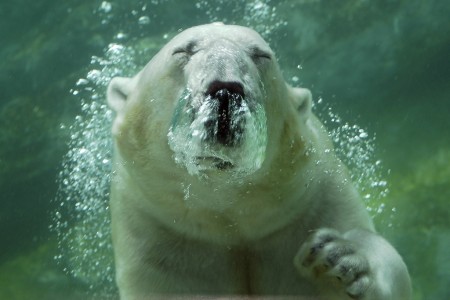Course Blogs in the Sciences (#CIRTLForum)
 One of the examples Gardner Campbell shared in his keynote at the CIRTL Network Forum the other night was a course blog called “Bears in the SEA” for an introductory biology course at Baylor University. Baylor’s mascot is a bear, thus the “bears” part of the blog title. The SEA refers to the Strategic Education Alliance (SEA) sponsored by the Howard Hughes Medical Institute. Here’s how Bryan Gibbon, the course instructor, describes this program:
One of the examples Gardner Campbell shared in his keynote at the CIRTL Network Forum the other night was a course blog called “Bears in the SEA” for an introductory biology course at Baylor University. Baylor’s mascot is a bear, thus the “bears” part of the blog title. The SEA refers to the Strategic Education Alliance (SEA) sponsored by the Howard Hughes Medical Institute. Here’s how Bryan Gibbon, the course instructor, describes this program:
Baylor was selected as a site to implement a creative new laboratory experience for students taking introductory biology. The National Genomics Research Initiative is centered around the study of bacteriophage genomics. Students will isolate (Capture) bacteriophage from soil samples and purify a single bacteriophage strain (Tame). The students will characterize their bacteriophage (Dissect) by studying its morphology by electron microscopy and its genetic features by purifying DNA and comparing restriction fragment patterns by gel electrophoresis. The class will select a DNA sample to be fully sequenced by next-generation sequencing, and the genome will be characterized and annotated in the second semester.
Pretty impressive goals for intro biology students!
From what I recall of Gardner’s talk, Gardner introduced Professor Gibbon to the idea of a course blog. Gibbon wondered what he could ask his students to blog about, and Gardner suggested that they share their experiences participating in this research project. Gibbon liked the idea, and so that’s what his two dozen students are doing on the “Bears in the SEA” blog.
Their posts are examples of what I think Randy Bass of Georgetown University would call “thin slices” of student learning. Each post describes a bit of the learning process as that student is experiencing it. This makes that student’s learning a bit more visible, both to Professor Gibbon and to the other students in the course. Often these “thin slices” of learning aren’t visible to anyone but the student, and so the blog allows this kinds of learning to be more collaborative, which in turn (I’m guessing) makes the course into more of a learning community, where students have some investment in the shared learning process.
“Bears in the SEA” is also an example of what Gardner calls a “motherblog.” Each student actually has his or her own blog, one the student gets to design and decorate as he or she likes. The course-related posts from these student blogs are then aggregated on the “Bears in the SEA” blog through RSS. This gives Professor Gibbon and the students a single place to see all student posts, which is handy. But when you click on a student post (perhaps to leave a comment on it), you’re taken to that student’s own blog. There you can see what else the student has been writing.
Gardner likes to point out that giving students their own “digital publishing platforms” helps them have more ownership over their learning and their online identities. And that, in turn, helps motivate them to take that learning seriously.
“Bears in the SEA” is a great example of how student blogging can work in a discipline like biology where blogging might not seem to be a natural fit. Know of any other examples of student blogging in the sciences?
Image: “Ready to Surface!” by Flickr user ucumari (CC)